Germany: Following in The Footsteps of Fallen Fathers: Part 2
AOL AutosEditor-In-Chief David Kiley took off on a road trip in Europe to celebrate the 70th anniversary of Jeep and explore family history connected to World War II.
As I turned South onto Rt. 399 from the A4, the trip through Germany with my traveling partner got almost involuntarily quieter. It was the road leading us to Hurtgenwald, a small village that was the epicenter of the 1944 battle in which my Uncle Eddie was killed.
The area is about 150 miles Northwest of Frankfurt and 60 miles south of Dusseldorf.
I had never been to this part of Germany. Route 399 is a typically peaceful country road, village after small village, much of the stretch providing a bike lane on roads as smooth as bowling alleys. Indeed, the whole Huertgen region, a roughly 40-mile by 40-mile block south of Aachen, is a cyclists' paradise whether you're navigating with a road bike or mountain bike.
The Huertgen Forest area is in the southern Rhineland region, which means you aren't far from Cologne, the Belgian border or Holland, or even the Mosel wine region.The Hurtgen itself, though, is a prime spot for backpacking, camping and exploring WW2 history.
In Huertgen, there is a small museum dedicated to the battle, which went on for a remarkable five months. TheBattle of Huertgen Forestis not nearly as well known as The Battle of The Bulge, which took place to the west in Belgium as the Germans tried to capture the port of Antwerp. In fact, despite its length, the battle only took up one paragraph in General Dwight Eisenhower's biography; principally, say historians, because the bloody campaign that claimed 33,000 Allied casualties out of about 100,000 who fought, is considered one of the worst decisions of "Ike's" career.
Exploring "The Bloody Huertgen"
Allied soldiers, mostly American, were asked to fight across the German border for the first time since the war began. The Fall of 1944 turned out to be one of the wettest in decades, a weather purgatory that would give way to one of the wettest, coldest winters in memory. And the Americans did not have proper winter gear or adequate supplies. The Germans were defending their homeland for the first time, and put up a fierce fight, bolstered by the fortifications and supplies laid into the Siegfried line, and in a thick pine forest that was a nightmare for tank warfare.
Starting in Huertgenald, hikers and cyclists can follow the Kall trail through the area, which, with the help of maps that can be picked up atthe museum, will take you to remnants of the war. You can find so-called "Dragon's Teeth," which are long rows of concrete pyramids set in the ground to block tank and troop advances; pillboxes; bunkers, memorials. There is a beautiful and moving cemetery where German soldiers are buried, and where U.S. soldiers have left a memorial tribute to a German soldier who treated Americans humanely.
As I toured the cemetery, it was hard to think of the Germans buried there as the enemy; rather, just young boys caught up in the maw of war and who probably hated warfare as much as the Americans they were fighting.
History in this area is still in the making. In early 2011, the remains of a German soldier were discovered in a farmer's field, and re-interred in the cemetery. Unexploded ordinance is still uncovered today. Relic prospectors can be seen with metal detectors still turning up bomb casings, guns, barbed wire, bullet cartridges and other flotsam associated with a five-month long battle.
A visit to theHuertgenwald museum, which is open only on Sunday, as well as surveying some of the battlefield area websites that are online, will give an adequate sense of the area. You can easily spend a whole day here. Because I had only a half-day, and wanted to make sure I saw what I went for, I contracted a guide I found on the internet for the day at a cost of $200.00. This was not only a help with the area, but he served as an interpreter for the German language exhibits at the museum. But I could have certainly gotten along without him with a whole day and my maps to explore.
He was invaluable, though, in finding the exact field where my Uncle was killed on December 11, 1944. It was on the edge of a small village called Kleinhau, next to Huertgenwald. As I did research on the Internet before I went o the trip, I discovered stories written by other people who have been to the area to locate, based on the detailed information they have from the Defense Dept. and historical data of the battle, almost the exact place where their loved one likely fell.
I never knew my uncle. Andmy fatherseldom talked about him. But I made a connection with a family member that I only know through pictures, as well as my family's history and contribution to the war effort and world freedom. It's heady stuff that I recommend to anyone with a family connection to the war.
The service records of a loved one killed in battle can be gotten without too much drama from the Defense Dept. If you are not a direct next-of-kin, a letter mentioning the Freedom of Information Act is a good, I am told by a government administrator. Those records combined with the abundant history of every battle, plus finding blogs and websites created by others who have done this before, makes putting your journey together a fairly easy and rewarding proposition.
Camping, lodging and big city hotels
Camping is possible alongside the River Rur, which was a dividing line between the advancing Allied forces and the gateway to the German industrial heartland, or in the forest itself in approved areas.
Lodging in the area is certainly possible, but be aware that the sidewalks tend to roll up early. If sitting on a patio under the stars with a bottle of wine suits you, you're set. But you may want to plan to leave the area after a day of touring, and drive to nearby Aachen, or even Dusseldorf for the night. In Aachen, try the Pullman Aachen Quellenhof ($140-$265), near the cathedral and with luxury amenities including spa, indoor pool and excellent bar and lounge atmosphere.
[Click hereto watch the video of David Kiley's journey in search of his "lost uncle." Andmore stories around the 70th Anniversary of Jeepcan be found here.]
Photo: David Kiley/HuffPost Travel
Foxhole
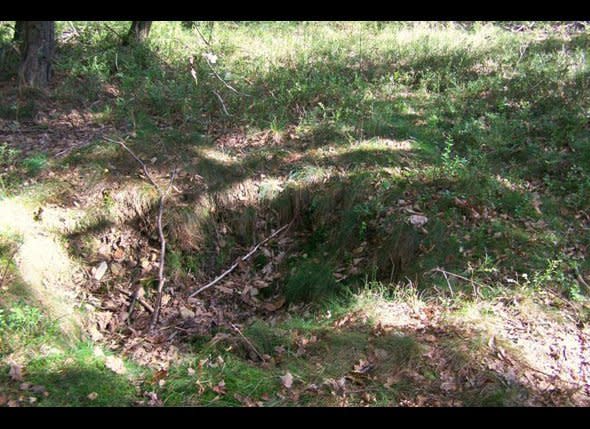
A Battle of Men Is Remembered
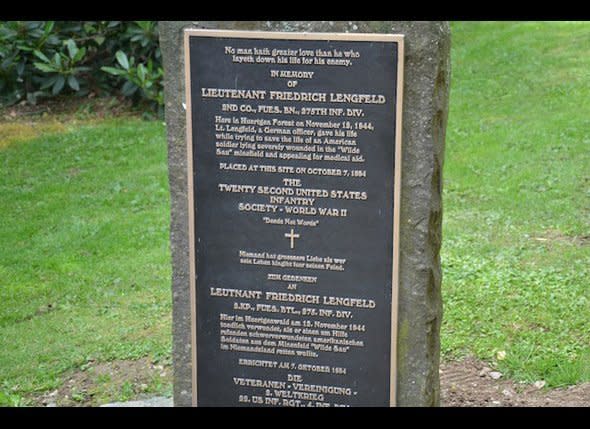
The Huertgen Forest
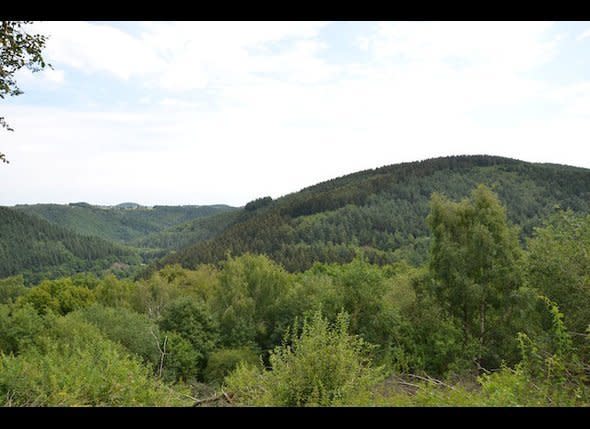
Bikes Through The Battlefield
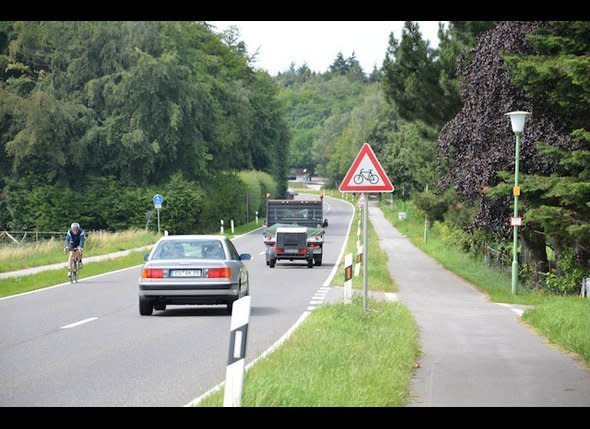
A Village Destroyed
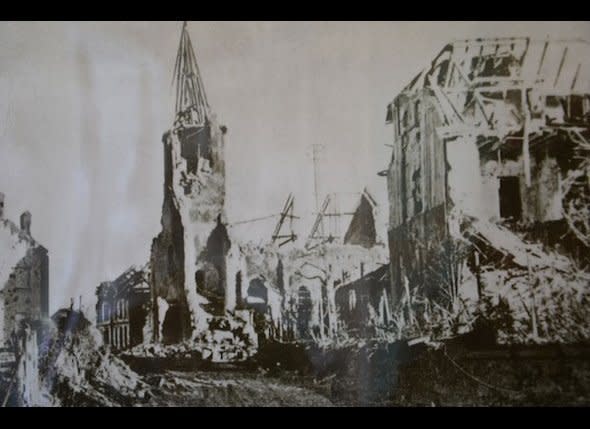
Vossenack Today
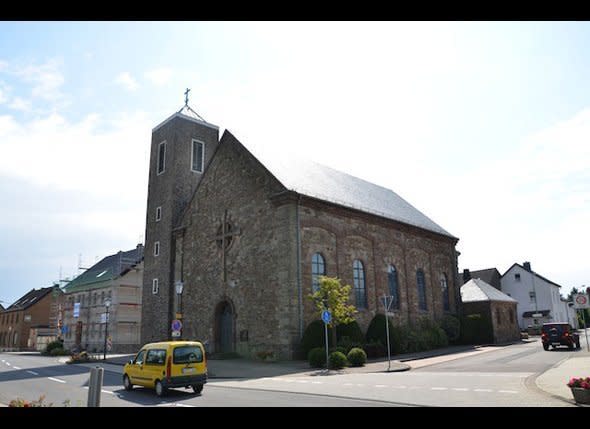
Battlefield Museum
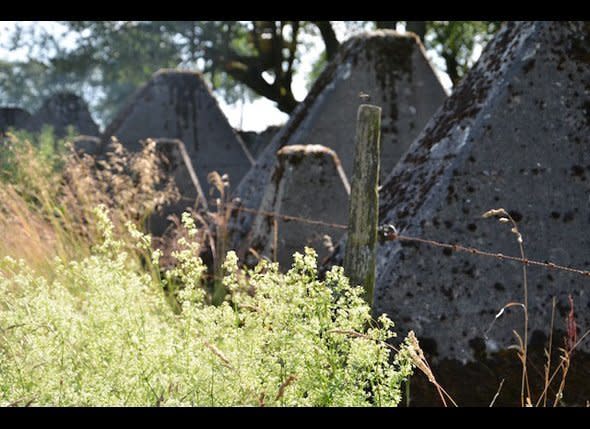
This article originally appeared on HuffPost.

